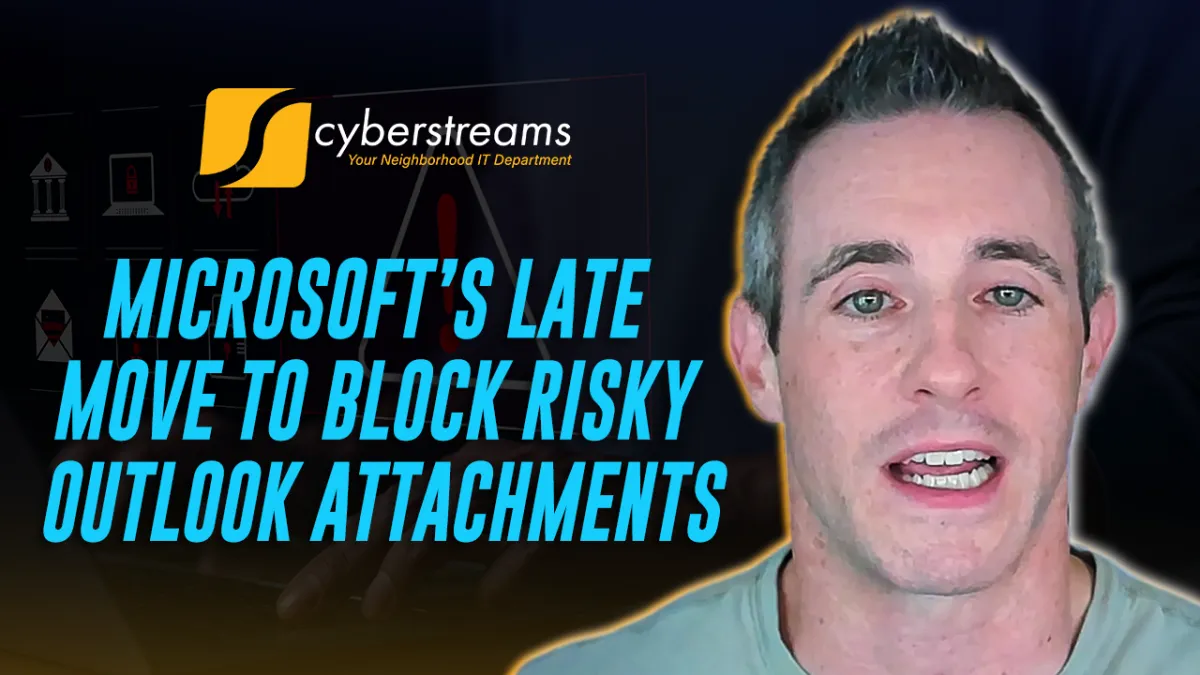
Microsoft’s Late Move to Block Risky Outlook Attachments
Microsoft is finally taking a long-overdue step to better protect your inbox. Starting July 2025, the company will block two notorious file types, .xyz and .wsf, in Outlook Web and the new Outlook for Windows. If you use Outlook for work or personal communication, this change is going to impact you, and it's high time we unpack what it means in plain English.
Why This Matters
Think of your email inbox as the front door to your digital life. You wouldn't leave your door wide open for intruders, but that's exactly what Microsoft did by not blocking these risky file types until now.
The .xyz and .wsf extensions have been linked to malware campaigns for years. They may appear harmless, like budget spreadsheets or team docs, but clicking them can install ransomware or steal your login credentials in seconds.
.xyz files: Often tied to obscure apps, these can silently run code in the background.
.wsf files: Used for Windows Scripting, they let attackers run system-level commands, essentially hijacking your machine.
These aren't hypothetical threats. In 2024, a .wsf file in a phishing email targeted a major retailer, resulting in $75,000 in recovery costs and stolen customer data, according to The Verge. And in 2023, BleepingComputer reported that a .xyz file caused a small business to lose $50,000 to ransomware.
Why the Delay?
That’s the million-dollar question. These risks have been known since at least 2020. Despite that, Microsoft, whose Outlook platform powers email for over 80% of businesses, waited years to act.
Reactions online are mixed. Some are relieved, posting "Better late than never!" Others are frustrated: "Why now, Microsoft?" The truth is, this decision should've happened years ago, especially given that 60% of malware enters via email attachments, according to a 2025 CyberScoop report.
What You Should Do Now
Microsoft's upcoming block is part of a larger zero-trust security model, a philosophy that assumes no file or user is automatically safe. While that’s a good step forward, it's also a reminder that you play a critical role in your own digital safety.
Here are three quick takeaways to help protect your inbox today:
1. Scan Attachments Before Opening
Use email security tools like advanced threat protection and antivirus software to check attachments, even from people you know.
2. Avoid Unknown File Types
Don’t open files with suspicious extensions like .xyz, .wsf, or others you're not familiar with. If in doubt, don’t click.
3. Update Your Outlook Security Settings
Make sure your Outlook app is up to date with the latest security patches and default protections.
Conclusion
Microsoft’s decision to finally block .xyz and .wsf files in Outlook is a step in the right direction, but it’s long overdue. With the rise of sophisticated phishing attacks and file-based malware, businesses and individuals can’t afford to wait for tech giants to catch up.
At CyberStreams, we believe in staying ahead of threats, not just reacting to them. As we move toward a more secure digital future, taking proactive steps, like scanning attachments and avoiding sketchy file types, can make all the difference.
Your inbox is your frontline. Lock the door before the attackers come knocking.
